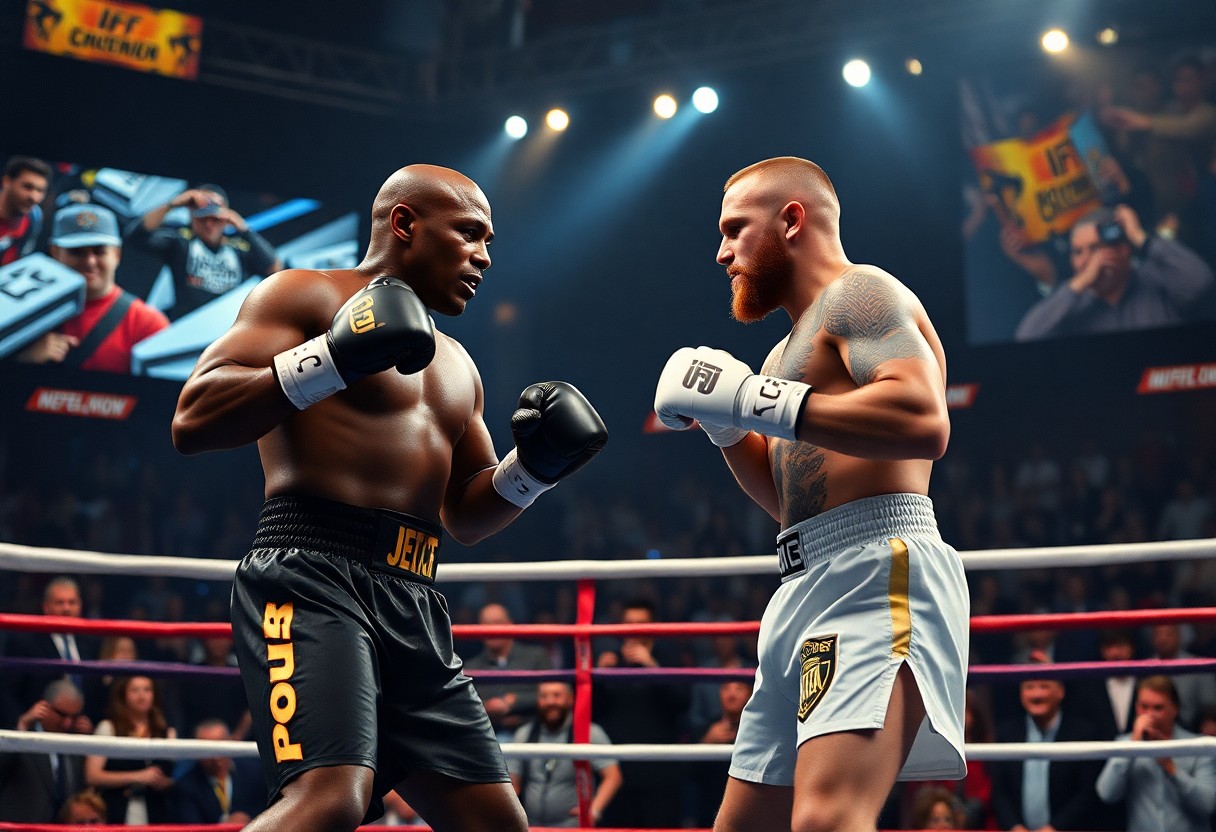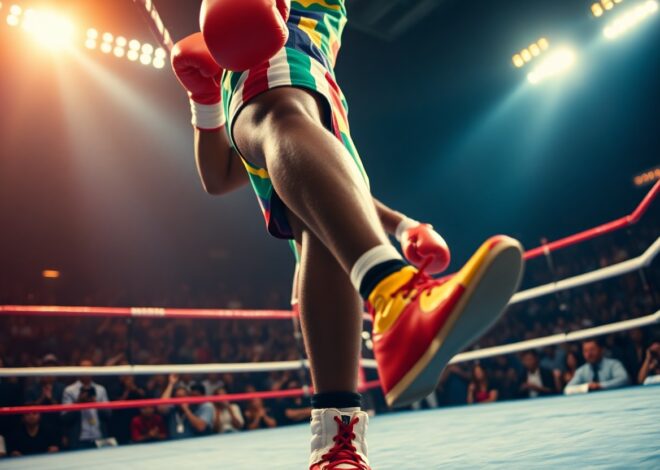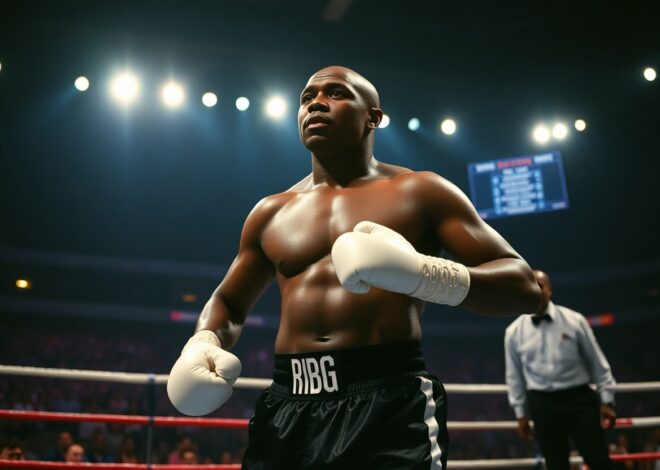
How Floyd Mayweather And Conor McGregor Redefined The Cross-Sport Spectacle?
You will discover how Floyd Mayweather and Conor McGregor transformed the landscape of sports entertainment by creating one of the most highly publicized and lucrative boxing matches in history. Their event not only attracted millions of viewers but also generated over $4 billion in revenue, showcasing the potential of cross-sport promotion. The fight merged boxing and mixed martial arts, capturing global audiences and setting a new standard for athlete collaboration. By blending their unique styles and personas, Mayweather and McGregor reshaped the narrative around sports rivalry and spectacle.
The Rise of Cross-Sport Promotions
The emergence of cross-sport promotions has shifted the landscape of athletic competition, as iconic matchups pull from diverse fighting backgrounds to create unique spectacles. Promotions such as the Mayweather-McGregor bout have ignited interest, drawing in audiences far beyond traditional fans. With savvy marketing and high-stakes gambles, promoters leverage the crossover appeal of fighters to maximize financial performance and audience reach, establishing a lucrative trend in both combat sports and entertainment.
Historical Context of Combat Sports
Combat sports have long captivated audiences, from ancient gladiatorial contests to modern-day boxing and MMA. Significant milestones, such as the formation of the UFC in 1993, revolutionized fight promotion and showcased multiple martial arts disciplines in one arena. This evolution laid the groundwork for hybrid events, allowing diverse fighting styles to clash and sparking public interest in unmatched pairings.
The Role of Celebrity in Sports
Celebrity status significantly influences sports promotions, transcending traditional fan bases. Athletes like Floyd Mayweather and Conor McGregor possess not only exceptional skills but also larger-than-life personas that captivate the public. Their social media presences amplify reach, drawing millions of followers and transforming fights into cultural events. The dual force of athletic prowess and celebrity appeal enhances media coverage and advertising potential, creating a feedback loop that benefits both fighters and event organizers.
This intertwining of celebrity and sports fosters an environment where athletes are not just competitors but also brands. The strategic use of marketing, personality-driven narratives, and social media engagement enables fighters to cultivate fan loyalty and expand their marketability. For example, McGregor’s infamous trash talk and flamboyant lifestyle attracted global attention, while Mayweather’s undefeated record established him as a symbol of success. In a landscape where public interest can drastically alter pay-per-view numbers and sponsorship deals, the marriage of celebrity culture and sports has proven indispensable for driving revenue in cross-sport promotions.
Floyd Mayweather’s Fighting Legacy
Mayweather stands as one of the most recognizable figures in boxing history, boasting an undefeated record of 50-0. A five-division world champion, his accolades include 15 major world titles and accolades from organizations like the WBC, WBA, and IBF. His skillful defensive style and unparalleled ring IQ transformed him into a master strategist, propelling him to generational wealth and cementing his legacy among boxing’s greats.
Career Highlights and Achievements
Throughout his career, Mayweather achieved remarkable milestones, including victories over iconic fighters such as Oscar De La Hoya, Manny Pacquiao, and Saul ‘Canelo’ Alvarez. His ability to generate revenue is unmatched, with fights grossing over $1 billion in pay-per-view sales. Notably, the 2015 bout against Pacquiao set records, grossing $600 million, while his overall earnings have propelled him to a place among the top-paid athletes globally.
Mayweather’s Marketing Genius
Mayweather’s acumen extends beyond the ring as he meticulously crafted a personal brand that resonates with fans and sponsors alike. He embraced the moniker “Money Mayweather,” leveraging it to symbolize wealth and success. His strategic use of social media platforms has cultivated a vast following, creating an influential presence that enhances his marketability, even in retirement.
Through shrewd promotional tactics, Mayweather transformed his bouts into events, utilizing a combination of brash self-promotion and captivating storylines. His persona attracts both controversy and admiration, securing lucrative sponsorship deals and merchandise sales. In the fight against McGregor, the blend of his boxing mastery and marketing flair generated $500 million in revenue, exemplifying his ability to merge sports with entertainment seamlessly. This calculated approach has ensured that even after his boxing career, the Mayweather brand thrives in various arenas, showcasing the power of effective marketing in modern sports.
Conor McGregor’s Impact on MMA
Rise to Stardom in the UFC
Conor McGregor ascended rapidly within the UFC, debuting in 2013 and capturing the featherweight title in just two years. His knockout victory over José Aldo in December 2015, which lasted only 13 seconds, solidified his status as a transcendent athlete. McGregor’s ability to draw massive pay-per-view audiences led to the UFC reaching unprecedented financial heights, with *UFC 229* featuring him garnering over 2.4 million buys, the highest in MMA history.
McGregor’s Charismatic Persona
McGregor’s allure lies in his charismatic persona, which blends brash self-confidence with sharp wit. His catchphrases and unique style of trash talk have not only captivated fans but also transformed promotional strategies within the sport. Colloquially recognized as “The Notorious,” he possesses a magnetic presence that attracts not just UFC aficionados but also general audiences, exemplified by his ability to sell out arenas worldwide.
This charisma often translates into a theatrical flair, making each of McGregor’s fights an event rather than just a competition. His bold predictions, such as claiming he would finish Aldo in the first round, showcase a blend of confidence and showmanship that has never been seen in MMA before. The spectacle he creates continues to influence how fighters market themselves, as seen in the increased emphasis on personality and promotion in subsequent athletes’ careers. McGregor’s selling power is evidenced by events where he brings in millions, even transforming UFC into a mainstream product globally.
The Build-Up to the Fight
The lead-up to the fight generated unprecedented buzz, as Floyd Mayweather and Conor McGregor’s contrasting personas created a perfect storm for promotional activities. Their clash was not only a battle in the ring but also a spectacle of personalities, amplified by a meticulously constructed media strategy that drew in millions of viewers and fans from both sports. From social media exchanges to pre-fight tours, every moment was calculated for maximum impact, setting the stage for an event that transcended traditional boundaries.
Promotion Strategies and Media Frenzy
Promotion for the fight reached fever pitch, leveraging every media outlet available. Both fighters appeared on countless talk shows, podcasts, and social media platforms, crafting narratives that amplified interest. The unprecedented decision to host a four-city promotional tour showcased their rivalry, with press conferences that turned into theatrical performances, captivating audiences globally. Highlight reels, sponsorship deals, and merchandise sales surged, ensuring the financial stakes were as high as the anticipation.
Fan Engagement and Public Interest
Fan engagement soared to extraordinary levels, fueled by interactive content and live events. The fight drew an estimated 4.3 million pay-per-view buys, the highest in history, showcasing a convergence of fanbases. Social media interactions exploded, with millions sharing opinions, memes, and predictions, resulting in a cultural phenomenon that kept the fight at the forefront of public discussion. From countdown events to celebrity endorsements, every marketing angle was exploited, ensuring broad visibility and participation.
Fan engagement encompassed not just passive viewership but also active participation from both boxing and MMA communities. As anticipation built, platforms like Twitter and Instagram became battlegrounds for fan opinions, fueling debates on tactics and potential outcomes. Exclusive behind-the-scenes content, pre-fight fan events, and interactive polls invited fans into the spectacle, solidifying a community that felt intimately involved in shaping the narrative. This two-way engagement not only heightened excitement but also blurred the lines between sports fandom and entertainment in general.
The Fight: Analysis and Breakdown
The bout between Floyd Mayweather and Conor McGregor not only captivated fans but also became a masterclass in contrasting fighting styles. Mayweather’s defensive prowess and tactical acumen clashed against McGregor’s unorthodox striking and formidable power. The fight unfolded over ten rounds, showcasing Mayweather’s strategic control, while McGregor demonstrated persistence, ultimately succumbing to fatigue and Mayweather’s experience.
Technical Aspects and Performance
Mayweather’s superior footwork and defensive skills were evident as he expertly dodged many of McGregor’s punches. Utilizing his characteristic shoulder roll, Mayweather neutralized McGregor’s early aggression, allowing him to dissect McGregor’s timing. In contrast, McGregor’s left hand posed a significant threat within the first few rounds, landing a few clean shots; however, his lack of stamina and boxing experience ultimately undermined his effectiveness as the match progressed.
Audience Reception and Controversies
The fight drew a staggering 4.3 million pay-per-view buys and generated over $600 million in revenue, reflecting its massive appeal. While many hailed it as a historic spectacle, others criticized the bout as a spectacle over substance, with debates about the legitimacy of a mixed martial artist competing against a seasoned boxing champion. Conflicting opinions emerged on McGregor’s performance and whether it was a genuine competition or a calculated money-making venture.
Audience reception was polarized, with many spectators expressing enthusiasm for the crossover event while others labeled it a farce. Social media exploded with commentary as fans and critics alike weighed in on McGregor’s initial success and subsequent struggle, highlighting the disparity in experience. The contrasting opinions intensified discussions on the nature of combat sports, questioning if the spectacle ultimately undermined professional integrity or if it provided an exciting, unique experience for fans. Controversy continued even post-fight, as discussions surrounding scoring and the ethics of a fighter from one discipline entering another created ongoing debates in both boxing and MMA communities.
The Aftermath and Lasting Influence
The Mayweather vs. McGregor bout created a paradigm shift in how sporting events are conceived and marketed, leading to an influx of hybrid matchups across various disciplines. The expectations surrounding competitive events were transformed, as this fight bridged divides between boxing and MMA, extending its influence beyond the ring and octagon to mainstream culture.
Financial Implications and Revenue
The financial aftermath of the match was staggering, with the event grossing over $600 million in total revenue. Pay-per-view sales alone hit 4.3 million buys, generating approximately $400 million in revenue. This marked one of the most profitable fights in boxing history, setting a new standard for future cross-sport events.
Legacy of the Event in Sports Culture
Mayweather vs. McGregor established a template for future crossover events, igniting interest in matches that pit athletes from different sports against one another. This event not only attracted an unprecedented audience but also demonstrated that audiences are willing to engage with and invest in such spectacles, influencing promotions to pursue similar matchups.
The match reshaped sports culture by proving that promotional strategies hinge on spectacle and entertainment value rather than traditional rivalry or championship significance. The celebrity aspects and bravado surrounding the fighters attracted non-traditional sports fans, elevating events into cultural phenomena. As a result, various promotions have since ventured into cross-sport bouts, aiming to replicate Mayweather and McGregor’s success, which has fostered a new era of competition that emphasizes entertainment as much as athletic prowess.
Conclusion
Summing up, Floyd Mayweather and Conor McGregor transformed the landscape of cross-sport spectacles through their unprecedented boxing match in 2017. By merging combat sports with entertainment, they attracted massive global attention and demonstrated the financial viability of such events. Their strategic promotion and the blend of contrasting styles created a unique narrative that captivated fans and drew in casual viewers. This landmark bout not only elevated their brands but also set a new standard for future cross-discipline matchups, highlighting the potential for lucrative opportunities within the sports industry.
FAQ
Q: What led to the emergence of the Floyd Mayweather vs. Conor McGregor match as a cross-sport spectacle?
A: The match emerged from the rising popularity of both athletes in their respective sports, boxing and mixed martial arts. Mayweather’s undefeated boxing record and McGregor’s charisma and success in the UFC created a unique crossover appeal. Their rivalry was fueled by extravagant promotions and social media hype, capturing the attention of mainstream audiences.
Q: How did the marketing strategies for the fight contribute to its success?
A: The marketing strategies included a worldwide press tour, extensive media coverage, and sponsorship deals that elevated the fight’s profile. Both fighters leveraged their personal brands, creating narratives that appealed to fans of both sports. The use of social media to share updates, training sessions, and behind-the-scenes content further enhanced engagement and anticipation.
Q: In what ways did the Mayweather vs. McGregor fight influence future cross-sport events?
A: The fight set a precedent for future cross-sport events by demonstrating the potential for significant financial gains and audience interest. It encouraged promoters to explore matchups between fighters from different sports, leading to a trend where athletes seek crossover opportunities to maximize their visibility and earnings. The spectacle also highlighted the entertainment value of such events beyond traditional competitive narratives.



